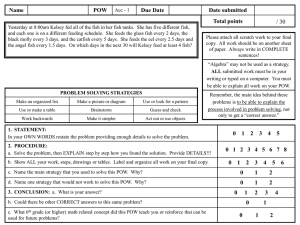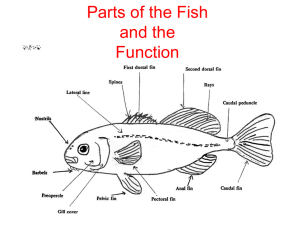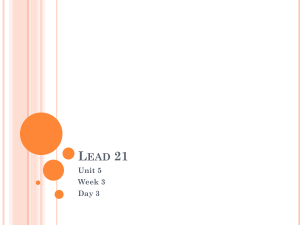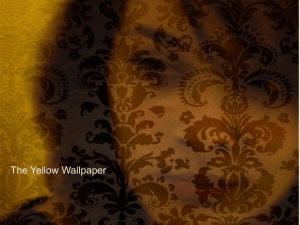Unit 2 Campus Life
advertisement
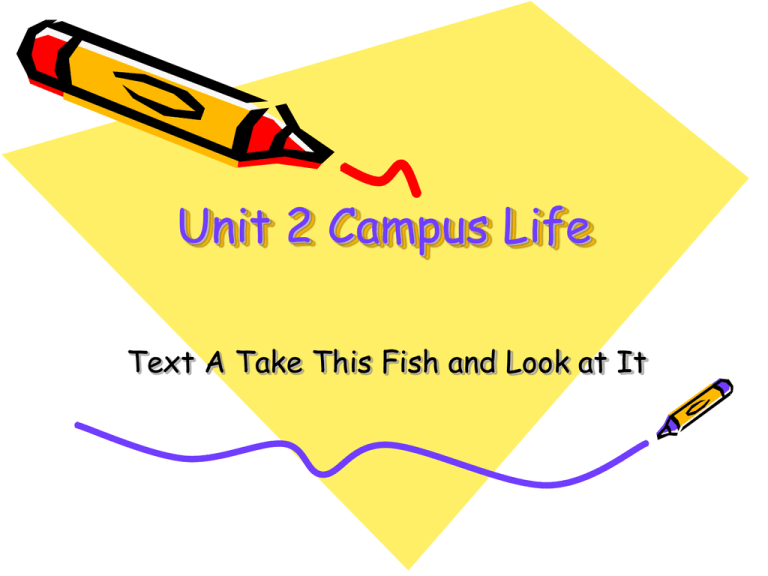
Unit 2 Campus Life Text A Take This Fish and Look at It Louis Agassiz (1807-1873) was a Swiss-born American naturalist and geologist, famous for his studies of fossil fishes and on geological evidence for the ice ages. He grew up in Switzerland and became a professor of natural history at University of Neuchâtel. Later, he accepted a professorship at Harvard University in the United States. • Samuel Hubbard Scudder (1837 –1911) was an American entomologist and palaeontologist ([‘pelɪɑn’tɑlədʒist]古生物学家) . Born in Boston, Massachusetts, Scudder may be most widely known for his essay on the importance of first-hand, careful observation in the natural sciences. The treatise on inductive reasoning, entitled "The Student, the Fish, and Agassiz", reflects his initial experience under the supervision of Louis Agassiz at Harvard University. Main Idea: The author gives an account of his first learning encounter with Prof. Agassiz and the great influence of the experience on his subsequent studies. Check the Organization: • How long did the author spend with Prof. Agassiz studying fish before turning to insects? • How long did he study that fish? • Scan the text to find the time slots, making a list of words or phrases indicating time. • Scan the text to make out all the conversations between Scudder and Agassiz. The finding is that in each time slot except the last one there is an important conversation. The text is divided into five parts: • Scudder’s first morning in the lab can be characterized as boredom and despair. • By drawing the fish in the afternoon, Scudder discovered new features in the fish but failed to notice its most conspicuous characteristic. • Scudder found one new feature after another when he began to work in earnest and saw how just Prof. Agassiz’s criticism had been. • By the end of the third day Scudder had learned the best entomological lessons in his life, one that was to guide his subsequent study and research. • The eight months Scudder spent studying fish was of greater value to him that years of later investigation into insects. Questions for Discussion 1. 2. 3. 4. 5. Why did Agassiz keep saying "look at your fish"? What was he trying to teach Scudder? How would you describe the stages in Scudder's process of looking? What happened at each stage? How did Scudder change in the course of his experience? Explain why you think Agassiz's method of teaching was either effective or not? How might you apply Scudder's experience to learning or to other academic activities? • Agassiz kept saying "look at your fish", because he wanted Scudder to see past the immediate appearances. He was trying to teach Scudder to go beyond the immediate appearances that he saw, because those are dull and boring and everyone can see those and he wanted him to learn how to look at things from different perspectives. Scudder’s process of looking at the fish was a gradual one. He didn’t immediately see what Agassiz was talking about and had to sit and study the fish until he saw past the initial appearance. At first when Scudder looked at the fish he only saw the outside features and thought that was it to see. Then when he couldn’t find the professor anywhere he started to look at it more. Scudder • looked at it from the other side, front, back, and up and down and still couldn’t see anything else. Then finally Scudder came up with a bright idea and started to draw the fish. As Scudder was drawing the fish he began to find new features in the creature. At that point the professor came back and said “That is right,”, “a pencil is one of the best of eyes….” Agassiz then asked Scudder what the fish was like and Scudder told him. Agassiz said that all the information was correct, but he was still missing one thing and Scudder couldn’t think of it. Agassiz then told Scudder to go home and think about it and come back and answer him in the morning. The next morning Scudder came in and said “Do you perhaps mean, • that the fish has symmetrical sides and paired organs?” Scudder was absolutely correct. How Scudder changed during the course of the experiment is he started to see things in a different way and not the same boring point of view. He was able to look past what popped out in front of him and was able to see what was underneath. I think Agassiz’s teaching was very effective, because it gave Scudder a chance to think on his own. But Agassiz's method requires time and patience. I would be able to apply Scudder's experience to many things in my life, learning to take the time to fully understand something and realize what it is. How I might • apply Scudder experience when I go to write or do any other academic activities is put myself in the same position he was in. I will lock myself in my room with no contacts or anything. Then I will try and make myself look at things in different perspectives and won’t let myself out until I do. • This is a classic account of the importance of first-hand observation, and careful, intense, focused study. It teaches lessons that apply to almost any discipline. Indeed, it is widely used in colleges and universities across the U.S. as a teaching tool in both the humanities and the sciences.






